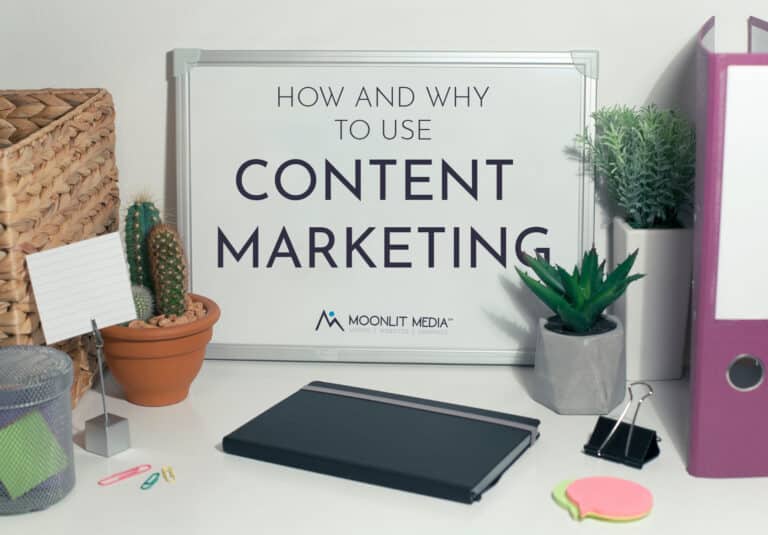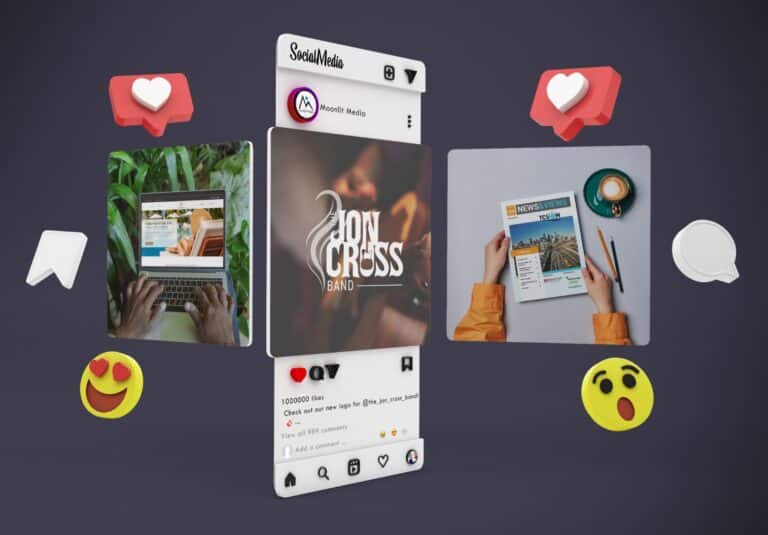Today’s world can be daunting when it comes to choosing a social media platform. However, establishing a strong online presence is vital for the success of any small business.
Social media platforms have become powerful tools for businesses to connect with their target audience, promote their products or services, and build brand awareness. However, with the plethora of options available, selecting the right social media platform can be a daunting task.
In this guide, we’ll walk you through the process of choosing the best platform for your small business.
What Businesses Need
We always recommend that business have at the very least, a Google Business Page, a Facebook Business page, and an Instagram business page. Even if you don’t update these regularly, it’s important to have a basic presence on these platforms.
This also helps prevent anyone from taking your business name and forming their own pages in the future. In that scenario, you may not have a choice but to use an unbranded name or fight to earn back your original page.
Understanding Your Social Media Audience
Before you dive into the world of social media, it’s crucial to understand your target audience. This requires some time and patience as you use Google Analytics, Facebook Ads Manager and other important tools to establish your audience or “tribe” of best customers. To do this effectively, you may need to run a few ads or boosted posts to begin establishing audience.
- Who are your potential customers?
- What are their preferences, interests, and demographics?
- Where are they located?
- Who is your “tribe”?
Conduct thorough market research to gather insights that will guide your platform selection.
Aligning with Your Business Goals
Different social media platforms serve various purposes. Some are better for brand awareness, while others excel at driving sales. Align your choice of platform with your business goals.
For example, if you’re aiming to showcase your graphic design skills, platforms that prioritize visual content like Instagram and Pinterest might be your best bet.
Again, it’s a good idea to reserve the page names you want on every platform, in an effort to preserve your brand name. You don’t necessarily need to be active on all of them, you just want to ensure you own the “handle”.
Analyzing social media Platform Demographics
Each social media platform has its own user demographics. Take time to study these demographics and choose platforms that align with your target audience.
For instance, if you’re targeting a younger demographic, platforms like TikTok might be more suitable, whereas LinkedIn could be ideal for B2B businesses.
Leveraging SEO for Small Business
Search Engine Optimization (SEO) plays a pivotal role in driving organic traffic to your social media profiles and website. Incorporate relevant keywords and hashtags related to your small business into your profiles’ descriptions, posts, and hashtags.
Consistency in using these keywords will help your profiles rank higher in search results, making it easier for potential customers to discover you.
Embrace Visual Excellence
In the realm of social media, first impressions are often visual. High-quality graphic design can set your small business apart from the competition.
Invest in visually appealing content that reflects your brand’s identity. Whether it’s creating eye-catching graphics, aesthetically pleasing posts, or captivating videos, graphic design can significantly impact user engagement.
Social Media Platform Options and Graphic Design
Whether you’re operating a service or a product based business, there is a market for you. Let’s delve into a few popular social media platforms and explore how graphic design can be integrated:
1. Instagram:
Known for its visual focus, Instagram is perfect for showcasing your graphic design skills. Utilize its features like Stories, IGTV, and Reels to display your work, share behind-the-scenes content, and interact with your audience.
2. Pinterest:
A visual discovery platform, Pinterest is ideal for businesses that rely heavily on visual content. Create boards that resonate with your brand and audience, and optimize your pins with keywords for better SEO.
3. Facebook:
While primarily text-based, Facebook still values compelling visuals. Utilize eye-catching cover photos, profile images, and well-designed posts to capture attention and encourage engagement.
4. LinkedIn:
If your small business operates in the B2B sector, LinkedIn can be a goldmine. Share professional graphics that convey your expertise and industry knowledge, establishing your business as a thought leader.
Consistency and Interaction
Whichever platform(s) you choose, consistency is key. Maintain a regular posting schedule to keep your audience engaged and informed. Moreover, engage with your audience by quickly responding to comments, messages, and feedback.
Social media is a two-way street, and meaningful interactions can foster brand loyalty. If you feel like you don’t have the time or energy to engage, consider hiring someone well-versed in your category to manage your social media pages for you.
Social Media Analytics and Adaptation
Keep a close eye on the analytics provided by each platform. Monitor the performance of your posts, track engagement metrics, and adapt your strategy based on the insights gained. This is best done through Google Analytics or any of the social media platform ad managers.
This data-driven approach will help you refine your social media tactics for maximum impact.
The process of selecting the best social media platform for your small business involves understanding your audience, aligning with your goals, utilizing SEO, and embracing graphic design. By considering these factors and tailoring your approach, you can create a compelling online presence that resonates with your target audience and drives business growth.








